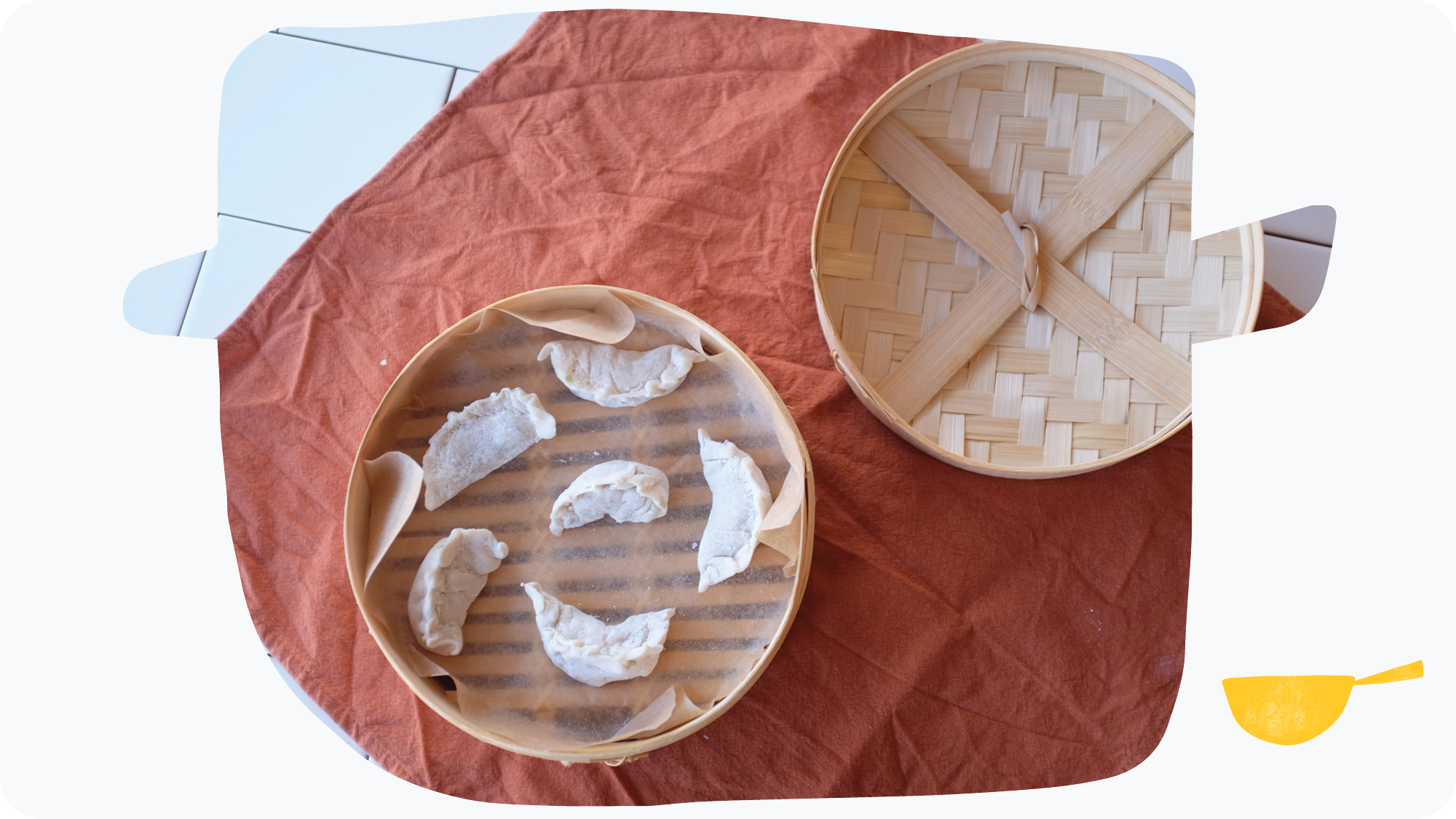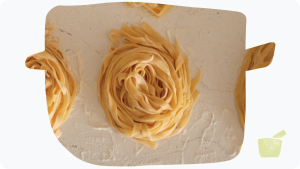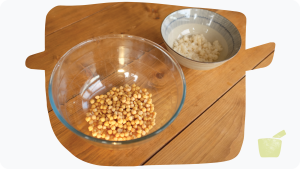A celebration of imperfectly-formed dumplings, the joy of communal cooking and taking the long way.
To me, the idea of making a dumpling by hand seemed impossibly daunting. The dexterity required to create intricate folds of dough around a tightly packed mixture of ingredients seemed pointless for me – a person whose handwriting increasingly resembles a language that not even I speak fluently – to even attempt. That was until a friend gave me tickets to a dumpling-making workshop for my birthday last year. Now they’re one of my batch cooking staples, with a couple of zip-lock bags of them ever-present in my freezer.
What I discovered when learning to make dumplings with a group of other first-timers was not only a new culinary skill, but a joyful way to spend time. To me, the experience resembled a combination of a cookery workshop and an art class, with the process of creating something from scratch bonding everyone together – regardless of technical skill.
I learned that an aesthetically-deficient dumpling (my speciality) tastes just as delicious as a picture-perfect one, and was introduced to a lovely way to turn food preparation into a social event. Making dumplings reminded me that cooking has historically always been a communal activity – a far cry from my usual batch cooking exploits that more resemble a squirrel preparing for a long winter. This has changed my attitude to food preparation more broadly, and certainly for the better.
Communal creativity
Making hundreds of dumplings from scratch takes a while, no matter how many people are involved. It’s also quite fiddly – even before you get to the process of folding each dumpling you have to spend an hour or two finely chopping the ingredients that will go inside. This would normally be frustrating, but during the evening, the time this took opened up space for everyone to interact while performing different tasks, all contributing to making the meal we would eat at the end of the class.
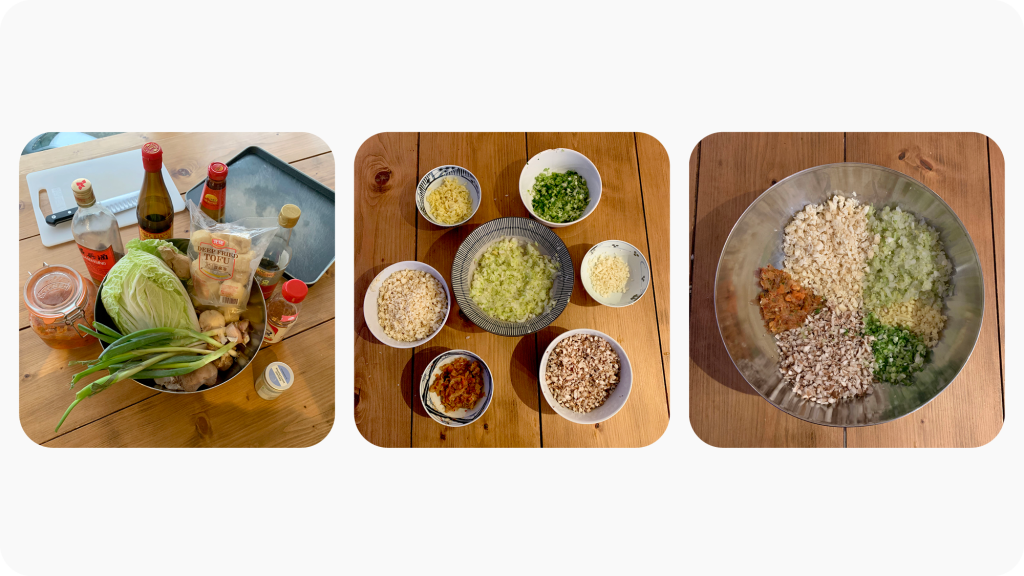
Cutting all the ingredients into small even pieces took the longest time. We were making vegetable dumplings using a combination of shiitake mushrooms, fried tofu, kimchi, napa cabbage, spring onions, ginger and garlic – so this left a lot of fine chopping to do (especially the fried tofu, which gets incredibly slippery when cut up due to the oil that is released). Chopping all of these ingredients to be of uniform size ensured that they would mix perfectly and give each dumpling a full variety of flavour: the reward for all our hard work.
These vegetable dumplings are still the ones I make at home to put in my freezer. The effort is always a communal one, either with my partner or with friends whom I entice over with the promise of a dumpling goodybag. During the class, the time we spent whittling down mushrooms created allowed for conversation to flow easily with strangers. At home this is a time when there is only room for you, your friends and the task at hand – removed from the fast-paced world outside, and chatting away as a mixing bowl gradually fills with salty, soft, crunchy and spicy pieces ready to be wrapped.
Folding
This is the part about which I was self-consciously apprehensive. I have never had a talent for making things with my hands – I cannot draw, and my childhood experiments with pottery or paper mache left a lot to be desired. I looked upon a perfectly folded dumpling the same way I might look upon Van Gogh’s Sunflowers.
The trick is to realise that there is no strict requirement to do the folding part perfectly. As long as the dumplings are properly sealed, you’re good to go. During the class we were encouraged to approach the process with no pretention: the important thing was to make tasty and structurally-sound dumplings, not “correct” dumplings to restaurant quality standards.
Every weirdly shaped dumpling skin or folding disaster was a cause for laughter and conversation. I found that this approach took the pressure off and led to me being able to form pleats along the top of the dumplings (well, some of the dumplings) with much more precision than I had expected.
If I hadn’t had this experience, I cannot imagine having had the confidence to try making dumplings at home. Whereas now there are few evenings I enjoy more than those I spend with my partner, nattering away as we roll out dumping skins, spoon the filling inside and mould them into delicious bite-sized morsels.
Taking the long way
There are a variety of ways you can speed up the process of making dumplings. You could buy the filling or the dumpling skins pre-made, or you could buy a dumpling folder (these range from cheap plastic maraca-shaped contraptions to fully electric machines), or you could simply buy frozen dumplings from the supermarket.
Although all of these steps still lead to delicious dumplings, I’ve come to realise they cut something precious out of the process. Aside from the connections you can make with others by sharing the activity together, there is an undeniable pleasure in eating something you have chopped, shaped and folded yourself from scratch.
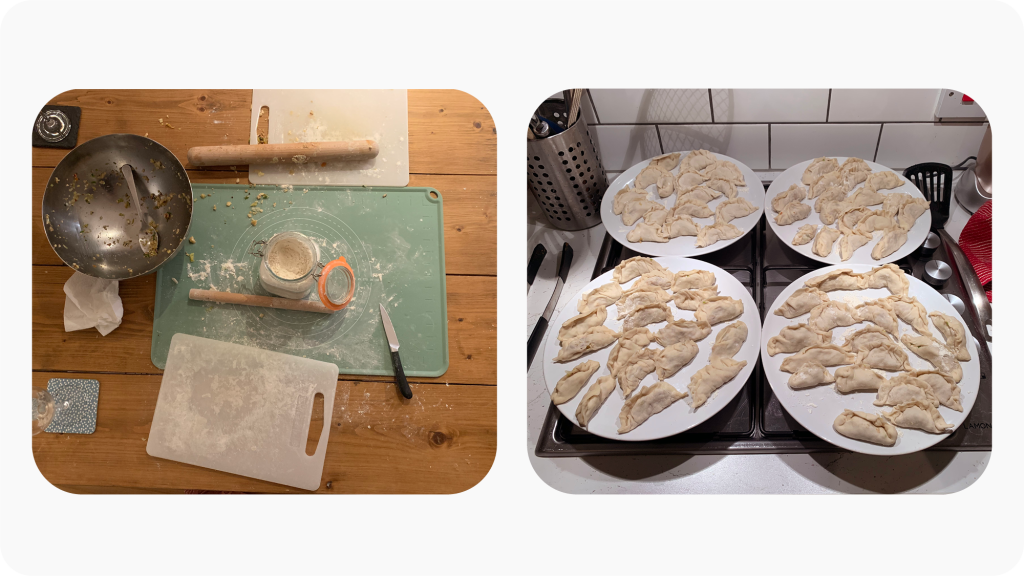
That being said, the time it takes to make dumplings means it’s best to make them in bulk. You need to chop all the ingredients very fine anyway, might as well chop loads: better to make 100 dumplings than 10. Just a word to the wise when freezing them: put lots of flour in with the dumplings and freeze them flat and separate at first – otherwise they all stick together and will be impossible to separate without breaking.
There are many tutorial videos out there on how to make and fold dumplings, but I can highly recommend going to an in-person class (the one I attended was at Rouge in Stoke Newington). Being with other people is the best way to learn, and also the best way to make dumplings when you know how.
